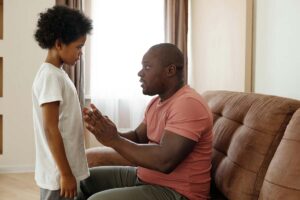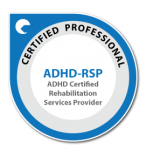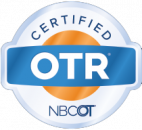

I frequently hear parents say one of these things regarding the type of parenting they experienced: “My parents didn’t have a clue, I basically raised myself and I turned out fine”, “My parents were too strict/heavy-handed/mean, and I refuse to parent the same way”, or “I did what my parents said or I suffered the consequences, and I turned out fine”.
Regardless of how you were raised and your philosophy on raising your own child, you are sure to have questioned your own wisdom and skills at some point on this roller coaster we call parenting. You may have read books, talked to your pediatrician or other professionals, taken classes or attended parenting groups, or asked a friend whose skills you admire.
My work with kids with ADHD goes deeper than just strengthening executive functioning skills, teaching strategies for self-regulation and how to meet their sensory needs, and developing healthy habits for a lifetime. ADHD is a whole family issue: it impacts the parent/child relationship, as well as relationships with siblings.
Further, these kids are often acutely aware of how “their issues” impact the entire family. They may be put on medication, or sent to counselors or tutors. They understand that they experience struggles in areas that seem to come easy to many other kids. They are prone to low self-esteem and feeling “less than” other family members.
When I first became interested in helping kids and teens with ADHD, I knew that I wanted my practice to address the whole family. To that end, before I begin any individual work with a child or teen, I begin with a phone call or meeting with the parent(s). I want to know, from their perspective, their biggest frustrations, their expectations, and their goals for their child. I want to understand their parenting philosophy and their mindset. If parents seek help just to “fix” their child to fit into the mold they envision, then what I do is probably not a good fit. Parents who are willing to learn and evolve their style and philosophy to better suit their child’s needs, which in turn benefits the entire family, are going to be more successful in the long run.
This may be a radical idea to some readers! Sometimes we get set in our ways of thinking and believing, but I would ask you gently to engage in some self-reflection at this time. If what you are doing is not working, and you are reading this blog for a reason, you may want to consider a major change. This will require you to take a giant step back and evaluate your parenting up to this point.
I will listen to you. I want to understand what has worked, what has not worked, and why. The reason that many parents struggle with their child with ADHD or related diagnoses is that they try to use an authoritarian, dictator-type parenting style. In other words, “my way or the highway”. (Or, as one of my client’s dad recently described his philosophy: “there’s only one sheriff in town”).
As you may guess, this parenting style ends in the inevitable power struggle, with only one party (the parent) “winning” and the other (child) being told what to do, and often resisting or only complying in exchange for a reward. Of course, there may be some non-negotiables that fall under this style, such as rules for using the car, curfews and bedtimes, and zero-tolerance alcohol and drug policies.
You may be surprised to hear that raising children can be even better and easier when parents use a collaborative style. When there is no winner and loser, but a definite win-win, everyone feels good. More importantly, self-esteem does not suffer and problem-solving skills are gained.
Parent/child collaboration involves both parties being able to see each other’s side and negotiate an acceptable outcome. It is not “letting your child get away with” (bad grades/ risky behavior/ slacking their responsibilities at home/ fill in the blank). It is figuring out how to solve your biggest struggles together.
I believe that your relationship with your child should never suffer at the hands of homework battles or negotiations over screen time and other items the child desires. There is a way for everyone to learn to work together and get their needs met. In Part 1 of this two-part blog, I mentioned Dr. Ross W. Greene’s Collaborative and Proactive Solutions (CPS) model. I will explore this model deeper here.
The CPS model is 3-pronged approach to parent/child collaboration. The three parts are empathy, concerns, and solutions. The first step is empathy, where the parent listens to the child and expresses understanding, either through repeating back what they said, or making an observation and asking something like “what’s up?” to gauge what the child is thinking and feeling. For example, “Jack, I notice that you are missing some assignments in English class. What’s up?” Jack may respond with “I didn’t want to do them”, or “It was too hard”, “I forgot”, or even “English is stupid”. The job of the parent is to simply show empathy by repeating back whatever he said, such as “Okay, I hear that you didn’t want to do the assignments”. By not immediately arguing, and by showing that you have heard from their perspective what is happening, you are already engaged in parent/child collaboration.
The second step is for the parent(s) to put their concerns about an issue out in the open. In the example above, Mom might say “Jack, my concern is that with every missing assignment, your grade drops”. Jack does not need to agree or disagree – it’s Mom’s concern. He may have a few of his own (he doesn’t understand but want to, or he wants a better grade) or not (he doesn’t care about English). Mom might then say “I’d like us to come up with some strategies so you have fewer missing assignments in the future”.
The third step is for both parties to propose solutions, with the child getting to speak first. In this example, Jack may say “I can do the easy or quick assignments first and get them out of the way, then ask for help on the ones I don’t understand” or “I can put a reminder in my phone so I don’t forget”. Mom may also want to check that the assignments are done, so that may be her proposed solution. She might also propose that Jack will continue to have free time with friends and to play video games, as long as he does his part. Then, Mom and Jack come to a mutually satisfying solution that meets both of their needs, is realistic, and can be long-lasting.
Mom expresses understanding of the situation by listening to Jack. Her concern is heard, everyone proposes solutions, then a decision is made for which solutions to try. Notice that no yelling and no threatening need to be involved.
I cannot do this model full justice in a blog, but trust me when I say that learning it can change your relationship with your child! I provided a very condensed version of what the model involves, and if you want to learn more, I urge you to read the book The Explosive Child: A New Approach For Understanding And Parenting Easily Frustrated, Chronically Inflexible Children. The book details exactly how to do this, why it works, and what to do in difficult cases, like a child refusing to talk. Done consistently and correctly, your child trusts the process of parent/child collaboration through mutual respect and problem solving.
Another model I mentioned in part one of the blog is the STAND model, which is short for Supporting Teens Autonomy Daily. This is a parent/child collaboration model facilitated by a trained therapist and involves three modules: engagement, skill building, and mobilizing. In the engagement portion, initial collaboration and motivation is gained through empathy, family choice in what changes they wish to make, and unearthing family and teen personal goals and priorities. In skill building, identified areas in need of strengthening are addressed. These may include executive functioning skills, study skills, or personal development skills. Finally, the mobilizing module involves engaging support through the school, forming habits of the new skills, and increasing practice and momentum for continued success.
I have the STAND model and materials. If this is something of interest to you, I urge you to look at the creator, Margaret Sibley’s, website: http://www.margaretsibley.com/about-stand/.
A quick online search will net you a wealth of resources for parent/child collaboration to deal with any host of parenting issues. By seeing your child or teen as a partner who is capable of learning to solve problems, strengthen executive functioning skills, and become more autonomous, you are re-framing your entire mindset around the most frustrating issues that come with parenting children with ADHD.
I often hear parents say something to the effect of: “He is totally capable, he just needs to try harder”. A variation of this is: “She is so smart, she just doesn’t want to do the work”.
I would offer you these options instead. In a parent/child collaboration model, having an open mind and avoiding blaming language are going to be key ingredients to getting your child “on board” with the changes that you want to make. He or she may be wary at first, because all they have had to go on is what happened in the past. Since we know that the best predictor of future behavior is past behavior, you will need to approach your child or teen with words that you may never have said before.
Here are a few suggestions for changing your language:
You are now on your way to parent/child collaboration! It’s a learned process on all sides – but I am sure that you will see positive changes and benefits with practice and consistency.
I work with kids and teens ages 5 – 18 and their families on these concepts every day. If you feel that you and your family can benefit from my services, fill out my questionnaire to see if ADHD coaching is a good fit!




Copyright 2024 © Kids Empowered 4 Life. All rights Reserved.
All information on the Website is presented as informational only and is not a replacement for therapy assessment, diagnosis, intervention, or medical advice. The information provided on the Website is provided “as is” without any representations or warranties, express or implied. Kids Empowered 4 Life assumes no responsibility for errors or omissions that may appear in the Website.